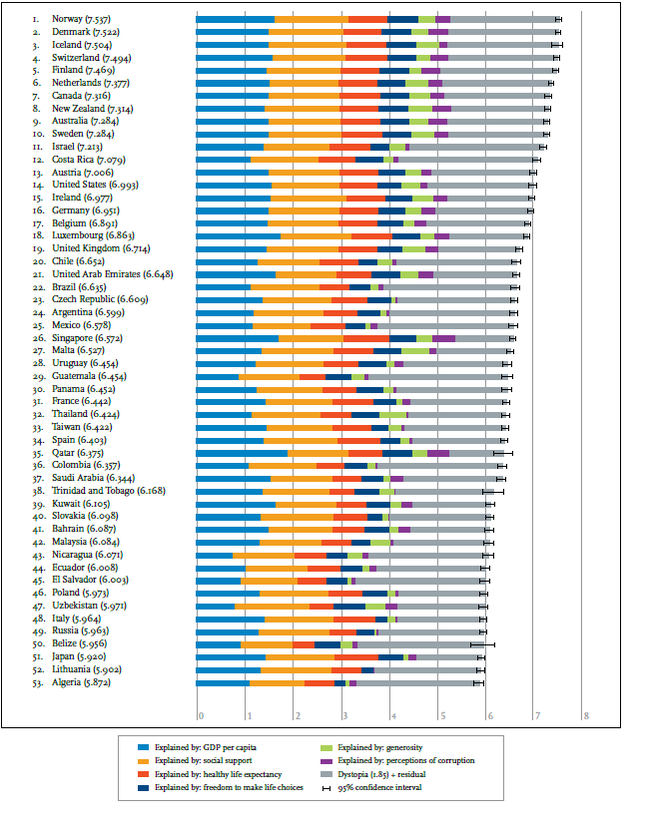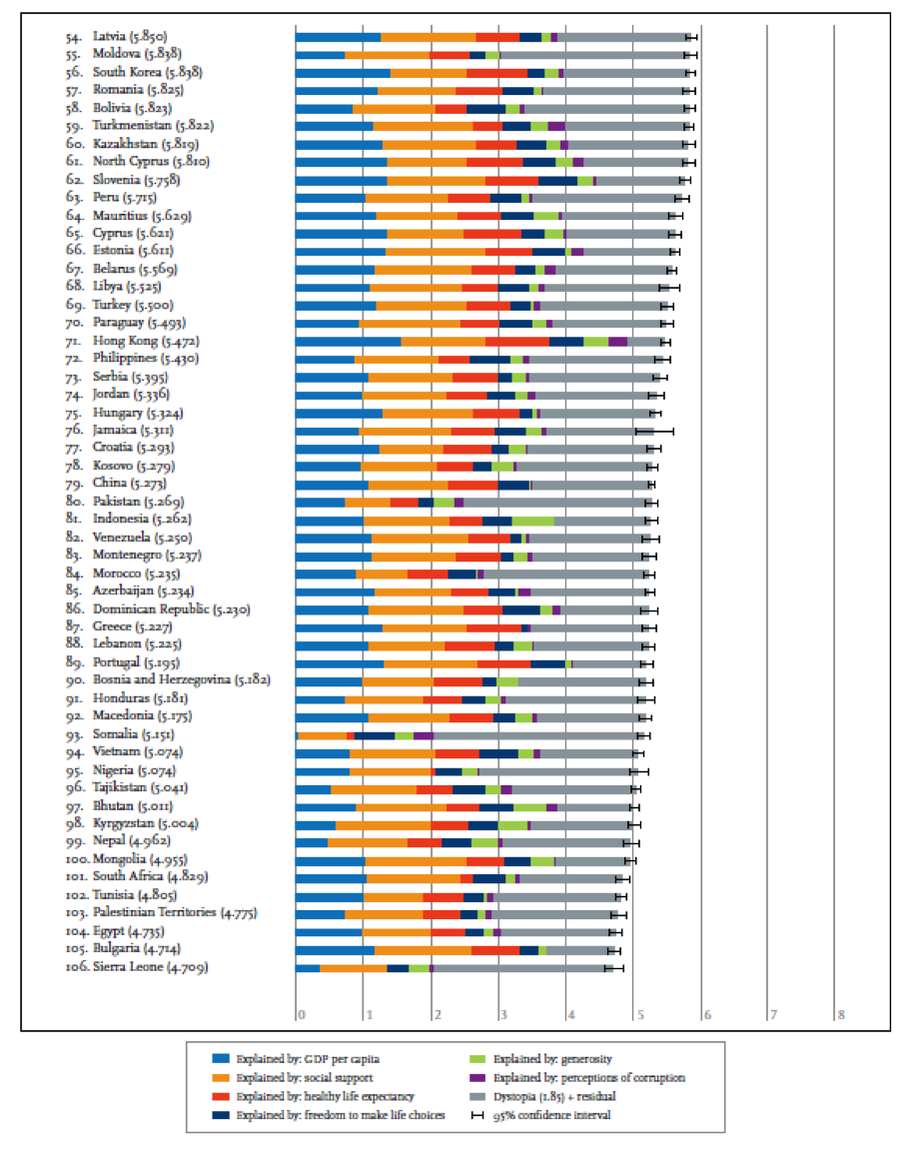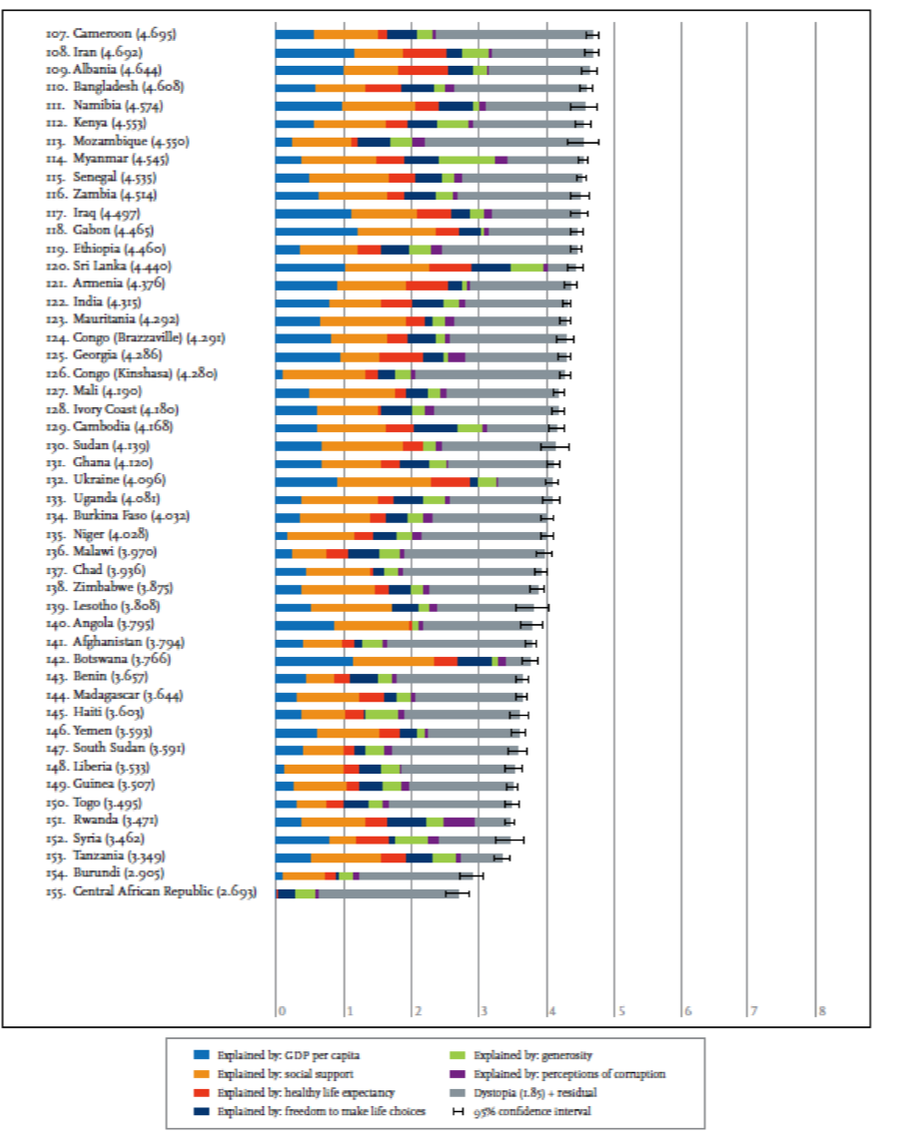
April will be Happy Birthday to the World Happiness Report. Fresh off the press on March 20th (The International Day of Happiness), this year’s report marks the 5 year anniversary of the first edition. First published in April 2012 by the Sustainable Development Solutions Network in support of the UN High Level Meeting on Happiness, The 2017 World Happiness Report spans across 155 countries, and the data is used world-wide in informing policy makers in their decision processes.
For the researcher, the scientist, the evidence based practitioner, and for any persons in society focused on wellness in the world, this 188 page report provides data-focused, tangible summaries to help gauge well-being of people where they live.
Summary of the report's methods
Happy 10 - The top 10 happiest countries are the same as last year (though in different positions)
Un-Happy 10 - The top ten unhappiest countries (from bottom up)
The key factors that the top ten 'happiest' countries have in common are:
Of particular interest in this year’s World Happiness Report is that it reveals the important role of social factors in supporting happiness. The calculations show that elevating the social foundations from low levels up to the world average levels would have greater positive affect than that of living longer, and making more money, combined.
This graph from the World Happiness Report 2017 demonstrates the impact of social support (mustard colour) on a country's overall happiness rating, using 2014-16 data. (54-155 are at the end of the article).

In Norway the oil prices fell, yet they moved into the number one position in the World Happiness Report. The idea that the successful output of goods and services does not denote a country's wellbeing, is shown in the fact that China’s Gross National Product (GDP) multiplied 5 times over a hundred years, while its subjective wellbeing (SWB) spent 15 years in decline, before starting to improve. Stress and anxiety in the labor market are attributed to this decline of SWB from 1990-2005, whereas changes in unemployment and in the social safety net are ascribed to their substantial recovery. Meanwhile, the Report attributes lower levels of happiness in many African countries to the slowness of change, even as democracy improves. Meeting basic needs in infrastructure and youth development still have not been sufficiently achieved, though the report suggests that African people's exceptional optimism may be their saving grace.
In Western countries mental health seems to affect happiness more than income. "In rich countries the biggest single cause of misery is mental illness," said Professor Richard Layard, director of the Wellbeing Programme at the London School of Economics' Centre for Economic Performance on this year’s Day of Happiness. The United States, Australia, Britain and Indonesia hold economic variables, social factors and health as their key determinants of happiness, while the emergence of mental illness is reportedly more important to all three Western Societies than income, employment or physical illness.
The 2017 World Happiness Report adds investigation of how work affects happiness, and shows that while income may not buy happiness, work matters. Across the world, those with jobs gauged their lives more satisfactorily than the unemployed, and demonstrate that rising unemployment rates affect everyone negatively. The report goes further into condition and types of work as also having an effect on predicting happiness levels.
The United States happiness rating has declined this year, now ranking at 14th, with a score of 6.99. While income and life-expectancy improved, the following four social variables declined:
Based on the calculation system, these declines in social variables could explain the significant drop in overall ranking for the US, emphasising that meeting social needs is crucial to happiness scores.
The 2017 World Happiness Report serves as a tool for many purposes. It helps to understand who is doing well, who isn’t, as well as why or why not in terms of national 'happiness'. Furthermore this report provides a clarification for areas of need – such as the need for the increased social support that is present where we see a greater level of measured happiness.
What this all culminates in is a viable agenda for implementation. The 2017 World Happiness Report demonstrates how social factors affect wellbeing and happiness positively, or conversely where there is lack, negatively. These aspects can be addressed through our development of policies and solutions, as planners, architects, designers and citizens active in our communities. We can target our efforts to support or create opportunities for social interaction, community support, and personal freedom. Through these efforts we can play a role in improving happiness across the board.
For UD/MH practical measures for solutions see:
The remainder of the 2014-16 rankings.


About the Author

Erin Newton is a UD/MH Fellow. She holds a Master’s Degree in Architecture from UCLA and a Master’s in Design from Domus Academy in Milan, Italy. Erin believes that integrity and creativity are fundamental to the success of the multi-faceted living world.
Michael Lemert
3/27/2017 12:59:23 pm
Excellent article, succinct and nicely structured to the point.
Mary
3/27/2017 02:13:01 pmFascinating!
Architecture, Design, Humanity, Mental Health, Behavioral Health, HealthCare Matters
No Comments
Block this user
Are you sure you want to block this user and hide all related comments throughout the site?
Archinect
This is your first comment on Archinect. Your comment will be visible once approved.